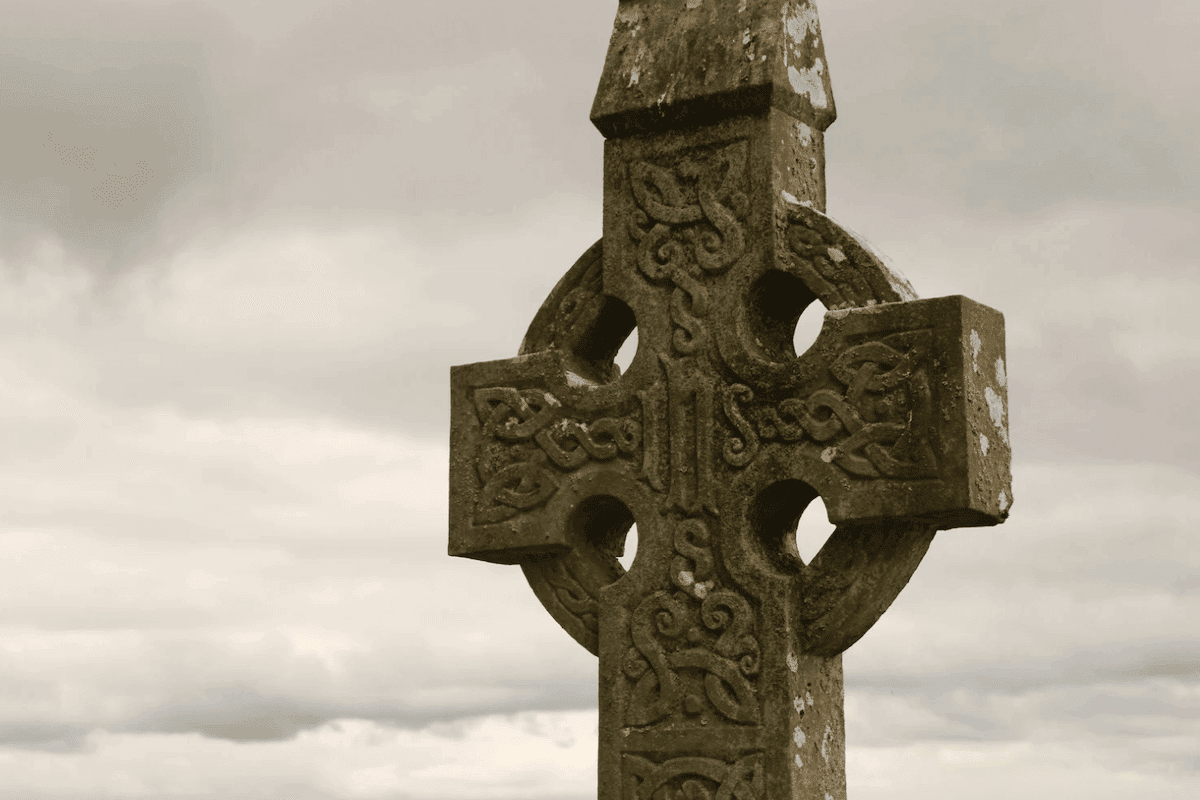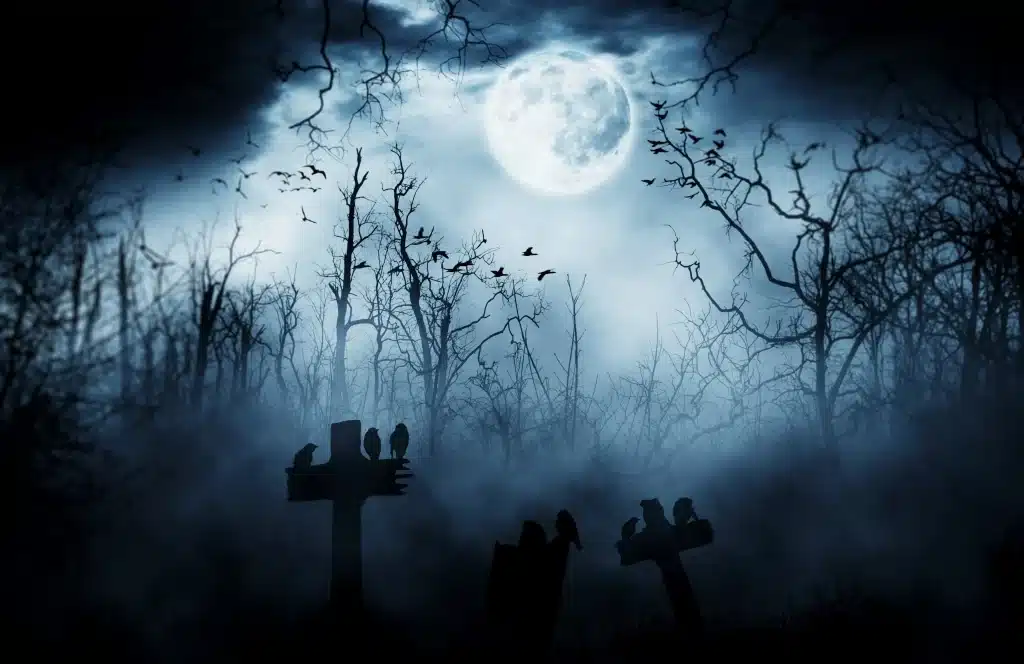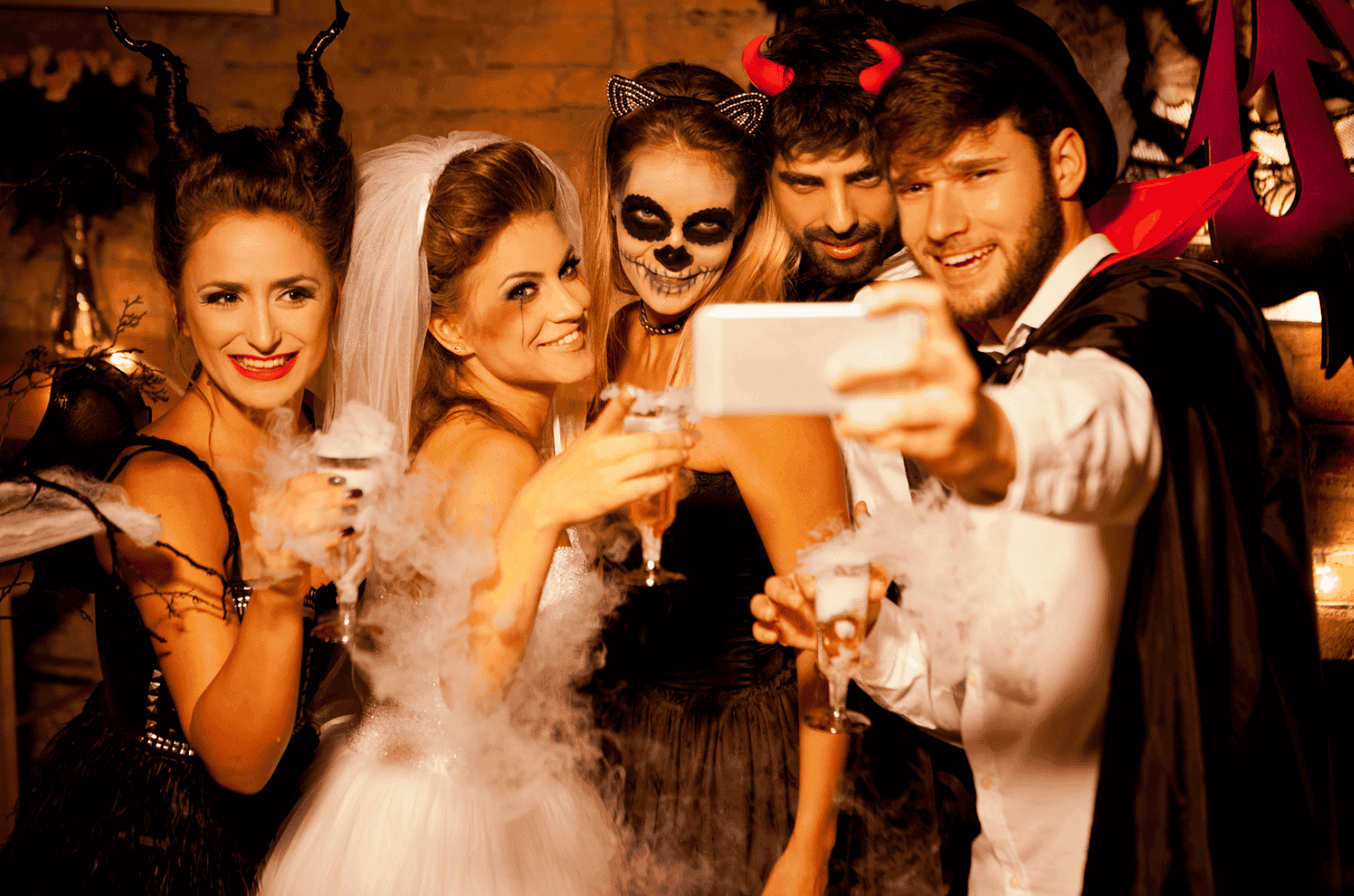RECENT POSTS
Categories
Tricks and Treats: The Real History of Halloween
With Halloween just around the corner, kids are beginning to plan their costumes, adults their “boo-zy” parties, and dentists their scheduled overtime. By now you’ve probably set out some decorations, brewed a pot of cider, and semi-successfully carved a pumpkin. Many of us have fond childhood memories of overheating in a too-clingy polyester costume, trick or treating door-to-door with a candy bucket. However, treats, scary movies, hayrides and haunted houses are only a part of the reason for the season. Halloween has a long and complex history, steeped in religion, rebellion and ritual. Several millennia ago, people felt the same chill in the air during the late days of October as we do today - and it’s not just the weather.
EARLY CELTIC ROOTS: THE TERRIFYING FESTIVAL OF SAMHAIN
The earliest origins of Halloween can be traced back over 2,000 years to the Celts of ancient Britain and the pagan festival of Samhain, or “summer’s end.” This celebration marked the changing of the seasons and end of the year, which for the Celts began on November 1st. Samhain was preceded by three days of feasting, competition and games. The night itself, however, was charged with fear. Celts dreaded the end of the harvest and the approaching winter, where many faced cold, starvation and death. A perceived rise in supernatural activity added another dimension to their fears.
The Celts believed that on Samhain, the barriers between the human and spirit world were lifted to allow pagan gods, devils, changelings and fairies (not the Disney kind) to play nasty tricks on their worshippers. Chanting, crop burning, bloody rituals and animal sacrifices were thought necessary to appease these entities. The Celts danced around enormous hilltop bonfires to keep dangerous deities at bay, guide roaming souls to the afterlife, and encourage the sun not to darken. Some evidence suggests humans were imprisoned and sacrificed at these events.

The Celtic people left their doors open to welcome the spirits of loved ones, but wore intimidating disguises made of animal parts to avoid being possessed or attacked by more desperate or malicious spirits. These costumes, which tended to depict beings like witches, werewolves, demons, goblins and fairies, grew associated with the night of Samhain, and later, Halloween.
Celtic priests, or Druids, took advantage of the stronger connection between the human and spirit world to commune with the dead and practice divination, predicting marriages, births, deaths, and the success of next year’s crops. These prophecies provided comfort to the Celts during a long, dark winter, sowing seeds of hope for the coming year.
THE ROMAN EMPIRE AND…BOBBING FOR APPLES?
When Britain was conquered (along with just about everyone else) by the powerful Roman Empire in 43 AD, Celtic culture and traditions were integrated into the melting pot of Roman customs. In late fall, the Romans would hold a festival to honor Pomona, the goddess of fertility and the harvest. Apples, the symbol of Pomona, took center stage at wild parties and lavish feasts. Historians believe the practice bobbing for apples originated from the festival of Pomona.
Over time, the eerie night of Samhain blended with Pomona to create the festivals of Feralia and Lemuria. While not much is known about Feralia, historians argue it was similar to Mexico’s “Day of the Dead;” Romans would leave food on the graves of their ancestors to honor their spirits and give them sustenance for their journey to the next world.
During Lemuria, the head male of each Roman household, or paterfamilias, would banish lemures (ghosts, not the furry primates from Madagascar) from the family home by spitting dried black beans onto the floor of each room as an offering. Once he captured every lemures’ attention with his spit beans, he would slam brass pans together in a “polite” request that they leave. While this method is not commonly used today to rid houses of ghosts, the Romans believed it highly effective.
“ALL HALLOWS EVE”
Give or take a few hundred years, the increasing influence of Christianity pushed long-established pagan customs underground. Under Emperor Constantine, Catholicism became the state religion, replacing polytheism and the cult of the emperor. Practicing pagans throughout the empire were less than thrilled - many continued with old customs and celebrations in spite of disapproval and persecution.
The fall of the Roman Empire in 476 AD did little to halt the spread of Christianity, but the Catholic Church struggled to supplant popular pagan holidays. In a hope to win converts, 7th century Pope Boniface IV incorporated Samhain and Feralia into new Christian holidays. Over time, the sacred and the secular merged together. “All Saints’ Day” was held on November 1 to honor the Christian saints and martyrs. November 2 became “All Souls’ Day,” an opportunity for people to pray for and honor the souls, or “hallows” of the dead. October 31, the night before All Saints’ Day, was considered a holy evening. Thus, “All Hallows Eve,” or “Halloween” was born.
Throughout the Middle Ages, children (and the poor) were much more enthusiastic about All Souls’ Day than Halloween. On the night of November 2nd, the children and poor of each community would go “souling,” an early precursor to trick or treating. “Soulers” would sing hymns outside the wealthiest homes in the community in a bid for food and money. Soulers promised to pray on behalf of the givers’ dead relatives in return for a donation and a spiced “soul cake.”

NO LONGER HALLOWED: HALLOWEEN AS A SECULAR HOLIDAY
After the Reformation, Halloween had lost its religious significance, but continued to be celebrated as a secular holiday in Scotland and Ireland. Rather than spending the night praying, or sacrificing to pagan gods and connecting with the dead, people held riotous parties where they drank cider, played fortune telling games, and went “guising.”
“Guising,” or “mumming” was a form of souling, but without the Christian elements. In a return to pagan customs, people would set out food and treats to pacify dangerous entities and the roaming spirits of the dead. Children and young people began to wear costumes of these entities and spirits to collect these treats themselves. Mummers of all ages looked forward to the night where they could dress in “guises” of ghosts, ghouls and witches and sing and dance for treats.
To protect themselves from evil spirits, mummers carried along “Jack O’ Lanterns” made from large turnips. This practice began with an Irish legend about a man named “Stingy Jack,” who tricked the Devil so he would not go to hell. As Jack could not go to heaven either, he was sent to walk the earth with an ember from hell in a hollowed out turnip to light his way. The Irish and Scottish put their own spin on “Jack’s Lantern,” carving terrifying faces into their turnips to keep evil at bay.
Halloween was considered a matchmaking opportunity for young adults, who came together on this occasion to mingle and play fortune telling games. Women would recite candlelight incantations while gazing into a dark mirror, hoping to see their future husbands. Apple-themed fortune telling games were common. Women would toss apple peels over their shoulders hoping to see the initials of their future husband. Apple bobbing competitions were popular as well. Each apple represented a different suitor - the apple a woman ended up biting into was meant to represent her future husband.
TAKING A TURN
The Puritans of the early American colonies banned Halloween, along with Christmas, Easter, and most other holidays. Anything associated with fun, festivity or paganism was on the official Puritan blacklist. Later on, the extinction of the Puritans, American ingenuity, and the beginning of widespread immigration began to loosen things up.
By the early 1800s, Halloween was viewed as quaint rather than evil, but was still a relatively obscure holiday, celebrated by small communities of Irish, Scottish and Welsh immigrants. The waves of Irish and Scottish immigrants fleeing the potato famine in the mid 19th century brought the Catholic practice of “souling” to the United States, infused with secular Halloween traditions like mumming, fortune telling and jack o’ lanterns. From the late 19th century onwards, Irish, Scottish and English traditions blended together into a more community-centered holiday.
Trick or treating as we know it was slow to take hold - but pranking and scaring neighbors was common, especially for Scottish and Irish teenagers. On October 31, kids, teens and young adults alike put on creepy costumes and roamed the neighborhood, playing tricks and committing acts of mischief and petty vandalism. Teens would burn stalks of cabbage and place them in people’s keyholes, so when they arrived home, their house smelled like sewer. Other common Halloween tricks included egging houses, opening gates to release livestock, scaring ladies with jack o’ lanterns, tipping over outhouses (whether or not they were occupied), and putting up fake road signs to confuse drivers.
Spirits (of the liquid variety) limited teens’ judgment, adding an element of danger to an otherwise innocent holiday. In the cities, especially Flint and Detroit, Michigan, these childish pranks grew increasingly dangerous. Pranksters waxed railroad tracks, set fires, tripped pedestrians and broke glass prompting backlash from city residents, who were advised to load their muskets with rock salt. Some cities sought to ban the holiday altogether, calling it “Devil’s Night.” US leaders, however, believed their children could be bought with the right incentive.

HALLOWEEN TODAY
To limit vandalism and disorder on October 31st, community leaders in the 1950s began marketing Halloween as a holiday meant only for children. They encouraged people to decorate their homes and give out treats to children on Halloween night, to deter them from pranking. Until candy companies grew more involved with the season, nuts, coins, fruit, and baked goods were more often handed out than candy. Children grew more creative with their costumes, tapping into pop culture - one was just as likely to see Superman and Butch Cassidy on the streets as a witch or ghost. To cut down on violence and arson, many mayors instituted a volunteer city watch (armed with hoses) and a dawn to dusk curfew for unaccompanied minors. House parties were encouraged to keep young adults off the streets. These measures were incredibly successful at both popularizing Halloween and keeping people and businesses safe.
By the 1960s, Halloween parties, spooky decorations, trick or treating with homemade costumes were practices deeply entrenched in American culture. Candy companies ramped up their marketing for Halloween, beginning to produce smaller, individually wrapped candies. Jelly beans, Nerds, Reeses Pieces, and countless other “fun sized” confections made their way into children’s baskets. In the 1970s, the media caused widespread panic by exaggerating urban legends of children being poisoned or finding razor blades in their candy. As a result, unwrapped, homemade treats became (mostly) a thing of the past. Many parents began accompanying their children, sticking with familiar neighborhoods or hosting alternative trick or treating events at local malls and churches.
As Halloween grew more commercialized, the influence of pop culture on the holiday grew. Costumes of characters from Disney and Star Wars movies became extremely popular as children impersonated villains and emulated their heroes. The release of “Halloween” in fall 1978 began a tradition of horror movies in October that has continued to the present day. The central figures of popular horror movies, Michael Myers, Freddy Krueger, Pennywise the Clown, and Jason from Friday the 13th, could now be seen wandering the streets trick or treating.
STAYING SAFE ON HALLOWEEN NIGHT
Over 179 million Americans currently celebrate Halloween, spending more than an annual $9.1 billion in the process. Kids love the holiday, dentists hate it, and young adults enjoy what they can remember of it, once the hangover subsides. Unfortunately, statistics show that car accidents and other personal injuries ramp up on Halloween night. Wild Halloween parties - and higher rates of drunk driving - have established October 31st as one of the deadliest times to be out on the road, whether you are behind the wheel or on the street. Statistics indicate that children are more than twice as likely to die in pedestrian accidents on Halloween than on any other day of the year. To keep yourself and your little ghouls safe, triple check before crossing the road, walk facing traffic, try to stick to sidewalks, and light your way with as much reflective tape, glow sticks and flashlights as you can muster.
Dog attacks are particularly frequent around Halloween, when unfamiliar people invade dogs’ territory in frightening costumes, startling them with strobe lights, loud doorbells, and rowdy children. No matter how well behaved, dogs are animals, and animals are unpredictable, especially when yanked out of their routine. If you have a dog, please take special precautions to avoid an attack or lawsuit. When trick or treaters come around, meet them at the door so they don’t ring the doorbell and startle your dog. Make sure your pet is inside, preferably secured in a crate or behind a closed door with a chew toy.
Similarly, children are often rushed to the emergency room days or weeks after Halloween, having sustained lead poisoning from cheaply made costume face paint. Choking on hard candy, allergic reactions, falling down steps, and ingesting glow stick fluid (yes, really) are common Halloween hazards that affect both children and adults.
Similar to other holidays with ancient roots, the Halloween of today is an entirely different beast than any of its early precursors. Human sacrifice, demon possession, and arson are all arguably absent from modern Halloween, making it much safer than in the 9th, 1st, 19th, or even early 21st century. That does not mean that we shouldn’t take precautions - Halloween is a holiday close to our hearts, and should be fun, not dangerous. However, If the worst should occur and you or your child is injured on Halloween (or at any other time) please contact our personal injury lawyers for a free evaluation. We’re here to help.
Ready to work together? Contact us today for a free consultation.
HERE'S WHAT TO DO NEXT
If you or a loved one have been injured and think you might have a case, call us now for a free consultation.


